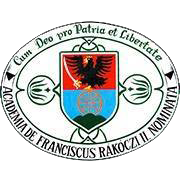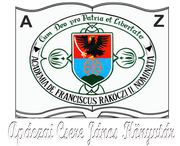Please use this identifier to cite or link to this item:
https://dspace.kmf.uz.ua/jspui/handle/123456789/3638Full metadata record
| DC Field | Value | Language |
|---|---|---|
| dc.contributor.author | Miklós Gábor | hu |
| dc.date.accessioned | 2024-05-10T16:55:27Z | - |
| dc.date.available | 2024-05-10T16:55:27Z | - |
| dc.date.issued | 2024 | - |
| dc.identifier.citation | In Csernicskó István et al. (szerk. biz.): Digitális gazdaság és fenntartható fejlődés: a pénzügy, számvitel, menedzsment, valamint társadalom- és viselkedéstudomány legújabb trendjei. II. Rákóczi Ferenc Kárpátaljai Magyar Főiskola által a "Rákóczi-napok" alkalmából rendezett IV. Nemzetközi Gazdaságtudományi Konferencia tudományos anyagai (Beregszász, 2024. március 26-27.). Beregszász, II. RFKMF, 2024. pp. 81-82. | en |
| dc.identifier.isbn | 978-617-8276-91-1 | - |
| dc.identifier.uri | https://dspace.kmf.uz.ua/jspui/handle/123456789/3638 | - |
| dc.description.abstract | Abstract. The Europe – Asia trade relations have been getting more intensive even if the global economy has had to face with the problems and post-effects of COVID19 or the current wars in different regions. It also means for the countries and participants to find new routes for trade – including the freight trains and giant container vessels – in order to avoid the hot and dangerous straits and points. Of course, new trade routes will be related to new economic and financial interests in one hand, on other hand there will be some classic trade countries or big cities, regions which lose their previous weight and importance [1, p.11] This research highlights the shifting of the trade routes and economic geographic process [2, p.68]. What kind of impacts are there in EU countries that a significant part of EU-Chine trade has been moving from vessels to freight trains or to combined, overland-maritime transportation. It has partly taken out the former China – Rotterdam/Hamburg maritime way. | en |
| dc.language.iso | en | en |
| dc.publisher | II. RFKMF | en |
| dc.rights | Attribution-NonCommercial-NoDerivs 3.0 United States | * |
| dc.rights.uri | http://creativecommons.org/licenses/by-nc-nd/3.0/us/ | * |
| dc.subject | global economy | en |
| dc.subject | Trade Route | en |
| dc.title | Relations between the Central-European Trade Routes and Revenues of EU Members | en |
| dc.title.alternative | A közép-európai kereskedelmi útvonalak és az EU-tagállamok bevételei közötti kapcsolatok rendszerek | en |
| dc.title.alternative | Взаємозв'язок між центральноєвропейськими торговими шляхами та доходами держав-членів ЄС | en |
| dc.type | dc.type.extendedAbstract | en |
| Appears in Collections: | Digitális gazdaság és fenntartható fejlődés: a pénzügy, számvitel, menedzsment, valamint társadalom- és viselkedéstudomány legújabb trendjei | |
Files in This Item:
| File | Description | Size | Format | |
|---|---|---|---|---|
| Miklos_G_Relations_between_the_Central_European_Trade_Routes_and_2024.pdf | In Csernicskó István et al. (szerk. biz.): Digitális gazdaság és fenntartható fejlődés: a pénzügy, számvitel, menedzsment, valamint társadalom- és viselkedéstudomány legújabb trendjei. II. Rákóczi Ferenc Kárpátaljai Magyar Főiskola által a "Rákóczi-napok" alkalmából rendezett IV. Nemzetközi Gazdaságtudományi Konferencia tudományos anyagai (Beregszász, 2024. március 26-27.). Beregszász, II. RFKMF, 2024. pp. 81-82. | 1.54 MB | Adobe PDF | View/Open |
This item is licensed under a Creative Commons License





